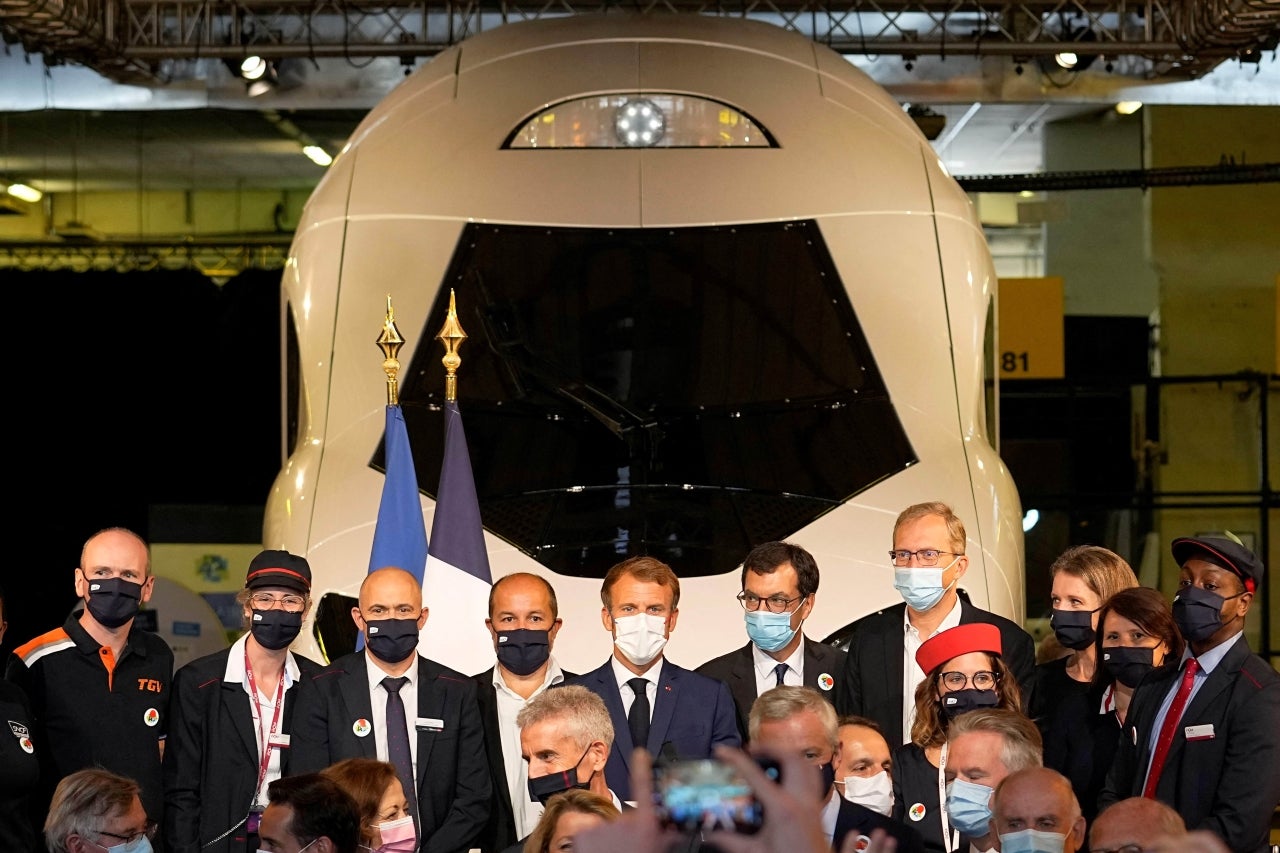
The TGV entered service on 22 September 1981, when it travelled for the first time from Paris to Lyon in 2 hours and 40 minutes. Renamed by newspapers around the world as a “Concorde-style train”, the TGV – the acronym for Train à Grande Vitesse (high-speed train) – has become a symbol of France around the world.
Almost forty years later to the day, French President Emmanuel Macron unveiled the next generation of TGV trains at Paris’s Gare de Lyon, the same station where then-President Francois Mitterand first introduced the service.

Discover B2B Marketing That Performs
Combine business intelligence and editorial excellence to reach engaged professionals across 36 leading media platforms.
In his speech, Macron defined the high-speed train as a “technological miracle” that will enable France to establish a “new railway pact to perpetuate our country’s railway system”. Entering into service in 2024, the new generation of high-speed trains will focus specifically on lowering the environmental impact, offering a lower-cost, environmentally friendly alternative to short-to-medium-haul air travel.
“This decade will be the decade of the new TGV, innovation and new ways of travelling for our constituents,” continued Macron.
The TGV: a symbol of France around the world
Taking inspiration from Japan’s Shinkansen high-speed train from Tokyo to Hokkaido, the TGV was born out of the need to cut railway journey times, while connecting more the different parts of the country to Paris. When launched in 1981, the high-speed network – part of a wider set of operations carried out by French national railway company SNCF – focused on linking Paris to the southeast via Lyon.

US Tariffs are shifting - will you react or anticipate?
Don’t let policy changes catch you off guard. Stay proactive with real-time data and expert analysis.
By GlobalDataIn the following years, other lines were added: in 1990 it was the turn of the Paris–Le Mans/Tours line while between 1992 and 2007, the Lyon–Valence, Paris–Lille, Valence–Marseille and Paris–Baudrecourt lines were launched.
“The TGV is a sign for the whole world that France is a great and innovative nation, well-placed to compete in the technology race,” said then-President Mitterand during his inauguration speech in 1981.
TGV trains were initially going at a speed of 180km/h – 30km/h faster than their Japanese counterpart – but in the next 40 years, they became faster, reaching today’s speed of 320km/h.
Because of how it revolutionised the concept of train travel, in the last 40 years, TGV has become a symbol of the French railway, inspiring similar trains around the world.
In Italy, high-speed trains started to enter the market in the early 2000s to mid-2000s, firstly with Frecciarossa in 2008 and the with Italo in 2012. In the UK, Eurostar has linked London to European cities such as Paris and Brussels, while domestically HS2 will offer faster journey times.
Unveiling the TGV-M
“Happy 40th anniversary to the TGV and long live the TGV of the future!”. With these words on 17 September, President Macron unveiled the new TGV model, TGV-M.
Named ‘M’ for modern and modular, TGV-M trains will make modularity their benchmark, allowing the number of cars to be adjusted according to different market needs, reconfiguring the inside space by removing or adding seats.
The fleet’s design will also take sustainability into greater consideration, focusing specifically on reducing the environmental footprint. To do so, TGV-M trains will have a 97% recyclable structure as well as an aerodynamic shape that allows for better air penetration and 20% energy savings.
According to train manufacturer Alstom – which unveiled TGV-M’s driving unit for the first time in May 2021 but received the first order in 2018 – maintenance costs will also decrease by 30%.
The trains are expected to provide the best service possible also when it comes to connectivity and accessibility onboard, featuring real-time information and Wi-Fi. The TGV-M is also the first TGV to be designed in collaboration with wheelchair user associations.
A new French Railway revolution
The new TGV-M fleet is the latest of a series of projects that – both at the government and the industry level – focus on innovating the country’s railway system with sustainability and net-zero the benchmark.
On the industry’s side, SNCF recently launched its Planet Voyage programme for long-distance trains, which focuses on reducing trains’ energy consumption by 20% by 2025. The company has also pledged to go zero-waste by 2030, by reducing waste from the cars, recovering the remaining waste, and eliminating single-use plastic.
At the government level, the Elysée has been massively funding the railway industry, investing €61bn in the last five years and pledging to invest a further €6.5bn. Part of the allocated funds has gone to the resurgence of night trains routes such as the Paris–Nice, with several more to come by the end of the decade.
“My ambition [is for] ten night trains in 2030 organised around four major corridors: Bordeaux to Marseille, Dijon to Marseille, Tours to Lyon via Ile-de-France and Paris to Toulouse,” Future Rail reported Transport Minister Jean-Baptiste Djebbari as saying.



